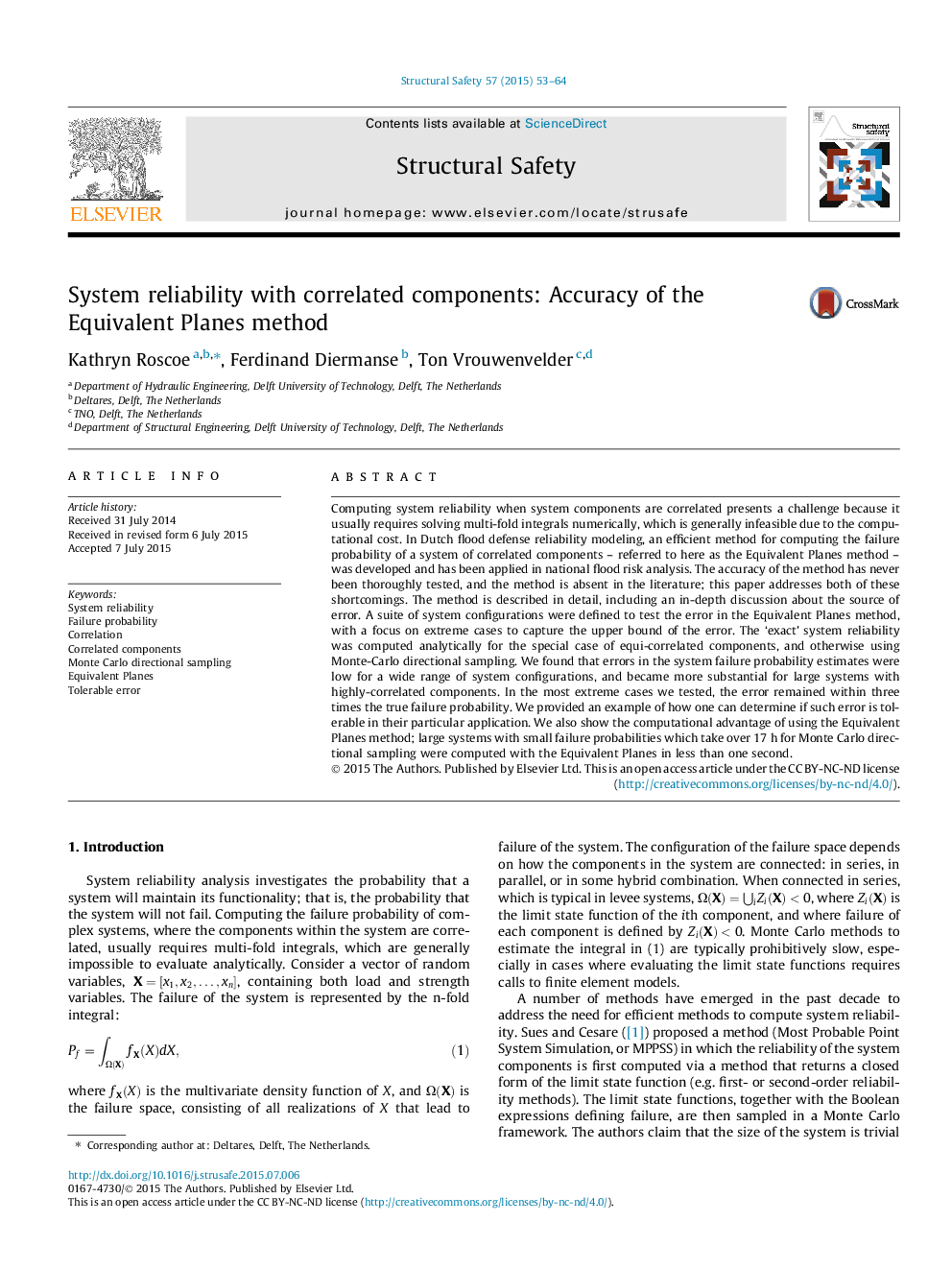| Article ID | Journal | Published Year | Pages | File Type |
|---|---|---|---|---|
| 6774193 | Structural Safety | 2015 | 12 Pages |
Abstract
Computing system reliability when system components are correlated presents a challenge because it usually requires solving multi-fold integrals numerically, which is generally infeasible due to the computational cost. In Dutch flood defense reliability modeling, an efficient method for computing the failure probability of a system of correlated components - referred to here as the Equivalent Planes method - was developed and has been applied in national flood risk analysis. The accuracy of the method has never been thoroughly tested, and the method is absent in the literature; this paper addresses both of these shortcomings. The method is described in detail, including an in-depth discussion about the source of error. A suite of system configurations were defined to test the error in the Equivalent Planes method, with a focus on extreme cases to capture the upper bound of the error. The 'exact' system reliability was computed analytically for the special case of equi-correlated components, and otherwise using Monte-Carlo directional sampling. We found that errors in the system failure probability estimates were low for a wide range of system configurations, and became more substantial for large systems with highly-correlated components. In the most extreme cases we tested, the error remained within three times the true failure probability. We provided an example of how one can determine if such error is tolerable in their particular application. We also show the computational advantage of using the Equivalent Planes method; large systems with small failure probabilities which take over 17Â h for Monte Carlo directional sampling were computed with the Equivalent Planes in less than one second.
Related Topics
Physical Sciences and Engineering
Engineering
Civil and Structural Engineering
Authors
Kathryn Roscoe, Ferdinand Diermanse, Ton Vrouwenvelder,
